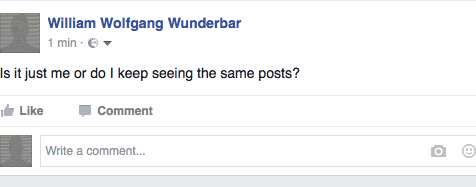
The above GIF was saved via the browser's "inspect element" feature from a net art project called Share This, by William Wolfgang Wunderbar. (hat tip CW)
Wunderbar's premise is you "feed back" the artist's collages of emojis, etc, into the Facebook data collection juggernaut, in a kind of proactive crapification of the system.
One could disagree with the idea that Facebook is our new reality, necessitating this kind of artistic response. If art is "about" subversion, on some level, the most subversive thing to do with Facebook, still, is not use it. Or share FB-intended work product outside of Zuckerworld. Hence, this post.

